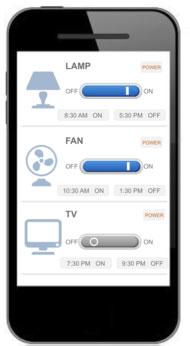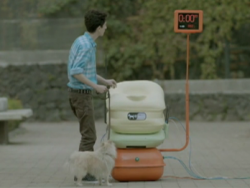The promise of the Internet of Things has been around for the better part of a decade. For the most part, however, the things have been few and far between – but that’s quickly changing. Now, a combination of technologies has begun to make things cheaper, less complicated and much easier to implement. There was a time, not all that long ago, when Wi-Fi networks were more novelty than necessity. They were expensive, unreliable, difficult to configure and slow. Moreover, they tended to only support a small number of connections. When I set up my first Wi-Fi network, I carefully did the math and came to the conclusion that under no circumstances would I need more than 10 connections. To be fair to that particular
Apple Airport Express, it performed its job heroically – right up until it overheated under the strain of constant use. These days it’s not uncommon for its replacement to handle the routing duties of two computers, a printer, two iPhones, an iPod Touch and an Xbox 360 at any one time. When guests are thrown into the picture, then my Airport Extreme might provide as many as 20 simultaneous connections, twice as many as I thought I would ever need. These days, most people still tend to think conventionally about the type of devices that they network. Desktops, laptops, phones, tablets, gaming consoles, network printers, storage devices, etc. The number of such devices in the average home has increased, but most families struggle to even come close to requiring the maximum number of connections that the average consumer-grade Wi-Fi router is capable of supporting. The difference between now and five or six years ago is that the number of connectable devices has risen. It seems fair to assume that a substantially greater number of people can see the utility of having a robust Wi-Fi network in their homes. While Wi-Fi may not yet be ubiquitous, we have reached the point where it’s in most middle-class homes. That’s exactly where it needs to be for the Internet of things. It also seems a reasonable argument that people would be less inclined to purchase a Wi-Fi-connected power-strip if it meant upgrading their network.
Fewer Obstacles
Until recently, the Internet of things has had a number of obstacles in its path. The cost of making a non-traditional device connectable and the difficulties involved in setup immediately spring to mind. While prices are still substantial, they have fallen to the point where for many, the benefits outweigh the cost. So, we are starting to see a raft of non-traditional connected devices -- thermostats, smoke detectors, power strips -- making their way onto the market. They all cost substantially more than their non-connectable counterparts, but their utility is such that more people will consider them. Have you ever passed the point of no return on a trip and started to question whether you left the coffee maker on? That feeling of dread that you get in such situations is an extremely powerful motivator – and manufacturers know that. The other issue with connected devices has always been ease of setup. I consider myself to be reasonably, if not highly, competent when it comes to setting up computers and electronics. That being said, connecting my printer to my Wi-Fi network felt like going to the dentist. The interface was slow, clunky and difficult to navigate. Worse yet, logging into the network involved entering passwords, using arrows and an Enter button. It was an excruciating task that took the better part of 30 minutes. It was a chore that I never want to repeat. These days most connectable devices can be set up directly via USB, micro-USB or Ethernet, but that usually involves moving the device to a computer or moving the computer to a device. It’s hardly a solution for a post-PC world. Wink technology allows for light-based programming of connected devices. Using a free smartphone app, the device in question can be programmed via an onboard light sensor, which detects screen flashes. Take your phone, hold it in front of the sensor and let the magic happen. The app is intuitive, the technology can be applied to just about anything and the app can always be updated to allow it to program new devices. It also offers the advantage of uniformity – one device programming solution to learn and no more ugly micro-USB ports to keep covered when not in use.
If This, Then That (IFTTT)
Wink technology might be sufficient to take care of the simple stuff or even to get more complicated things online, but higher levels of control are needed for more sophisticated devices. I’d argue that IFTTT is potentially the most significant advance in device programming
ever. For those who’ve not used IFTTT, it’s a simple application that allows the user to set up a range of IF-THEN scenarios to automate a range of processes. Initially, IFTTT was used for things like email, Twitter and Facebook. It offers a simple means of creating highly precise notifications or automated responses. These days it can do a lot more, and it’s being applied to device programming. Wink gives you the access, while IFTTT gives you the control. Take a connectable power strip, for example. Wink would give the user the means of accessing it via the Internet. IFTTT would give the user the ability to automate a range of actions. So, IF the power goes off, THEN send an email/Tweet. Or IF the device is on for more than two hours, THEN switch it off. A remarkable level of control is available from a simple set of programming instructions that can be entered via a highly intuitive interface. The potential applications for IFTTT are endless, but in the world of connected stuff, it’s all about one simple function: keeping things simple, meaning one tried-and-true interface that can be used for absolutely everything, without getting up because you can do it from your phone.
Not if, When
The resounding success of the connectable thermostat Nest demonstrated that the time is ripe for the Internet of things -- even before Google bought them. Since then, the trickle of devices has turned into a steady stream. Today, connectability is a wave on big-ticket items. When costs fall further, it will become a wave on cheaper products. When that happens, we’ll all be inundated with connected stuff. Until then, I’m going to talk myself into buying that overpriced connectable power strip, which will no doubt be a tenth of the price it is now.

